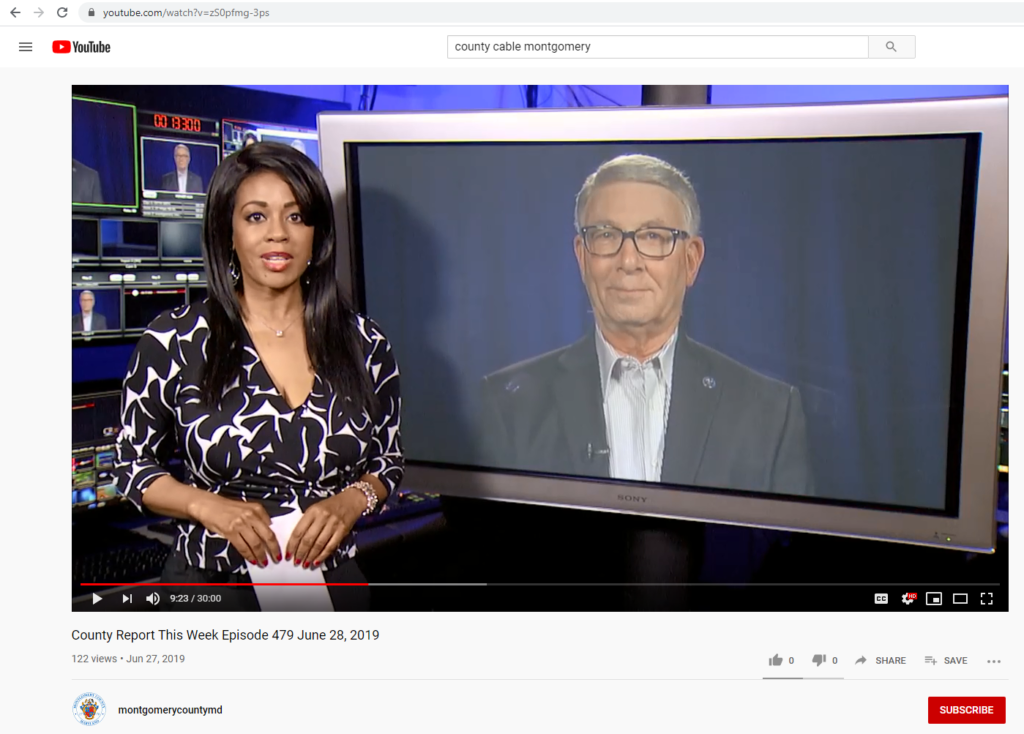By Adam Pagnucco.
The disappearance of local media has been a worrisome trend around the nation for years. MoCo is not immune. In the last year, three local media outlets – the Town Courier, the Montgomery Sentinel and Germantown Pulse – have all gone dark. That follows earlier closures of the Montgomery Journal (2005), TBD.com (2012), the Washington Examiner’s local print edition (2013) and the Gazette (2015). Many remaining media outlets are strained by over-stretched staff and frequent turnover. Long-time MoCo government reporters like A.J. Metcalf (formerly of Bethesda Beat) and Bill Turque (formerly of the Washington Post), both of whom worked their beat for more than four years and developed extensive source networks, are becoming rare. Even rarer are private media start-ups like Maryland Matters.
All of that is widely known. But here is something that has attracted less notice: with the decline of private news media, the fact is that the largest, best-financed entity now covering county government is the county government itself.
Montgomery County’s government, like the huge majority of local governments, has always had a communications capacity. That’s a legitimate governmental function as residents have a right to know how their tax dollars are being used.
But the county’s communications system has become larger, more sophisticated and more ambitious as the private media have become smaller. Ten years ago, the county government had little social media presence. Now, the county has multiple feeds on Facebook, Twitter, YouTube, Flickr and Instagram along with several blogs. County Cable Montgomery (CCM), which is part of county government, describes itself as “the local cable station you’ll want to turn to for local government news, public affairs programming, live Council sessions and County Executive press conferences.” Montgomery Community Media (MCM), a non-profit that receives more than 80% of its funding from government, describes part of its mission as being “a valued, trusted, ‘go to’ source for news, information and programming relevant to Montgomery County.” Both outlets pump out hundreds of professionally produced videos that look much like the work of private media outlets. The lines between government communications, government-provided “news” and promotion have been blurred beyond recognition.
Unlike private media, government communications and media outlets are subject to funding decisions made by elected officials. The table below shows budgets and full-time equivalent positions for five county government communications and media entities in FY15 and FY20. These are only partial totals as they exclude communications positions in county government outside the Office of Public Information and funding for the television channels run by MCPS, Montgomery College and municipal governments.

While local private media have been shrinking, funding for MoCo public communications has grown by 45% in just five years. More than 60 communications staffers work for the county and MCPS and that excludes employees of MCM. With a combined budget of nearly $12 million, the county almost certainly dwarfs the private sector in its production of communications and local “news.” Revenues for these public entities are derived from tax dollars and cable franchise fees paid through cable bills, meaning that private media entities are essentially required to fund their public competitors.
There is nothing inherently bad about the county government having a voice. However, when the government’s voice is not balanced by vigorous private media, problems arise. For example, many statements made by the county go unvetted and unchallenged for two reasons: the private media lacks the resources to do so and the county’s posture is to present its own view, not necessarily the views of others. News stories by professional reporters often present multiple perspectives on an issue. But when a county official expresses an opinion on County Cable Montgomery, the county government’s flagship “news” channel, how often are other people with different points of view interviewed and allowed to disagree?

County Cable Montgomery “news” program County Report This Week promotes the county liquor monopoly in an interview with Alcohol Beverage Services Director Bob Dorfman. Monopoly critics were not interviewed.
Furthermore, consider that what the county wants you to know is not always what you need to know. Government-controlled outlets are unlikely to do a lot of reporting on stories such as tax liens filed against County Council Members, ethics commission investigations of senior government officials, credit card abuses by school board members, elected officials pushing secret no-bid contracts, construction failures on huge county construction projects, epic failures of the liquor monopoly and massive outflows of taxpayer income. If they did, they might offend the elected officials who fund them. Without private media, such stories might never see the light of day.
Finally, think about what this means for political competition. How are challengers supposed to defeat incumbents when the incumbents effectively control the dominant media entity in the county? Is this one reason why no county-level incumbent lost reelection to his or her current seat in either 2014 or 2018?
Public media are here to stay but they must be balanced by private media. If you agree, please patronize and financially support any private media outlets that you believe offer quality local news coverage of the county. It’s in your own self-interest to do so.
